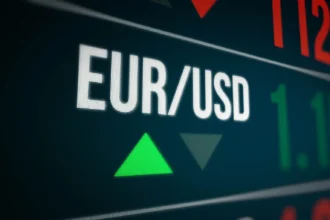What is EOS (EOS)?
EOS is a blockchain platform designed to support scalable and efficient decentralized applications (dApps). Developed by Block.one, EOS offers high throughput, low latency, and a unique delegated proof-of-stake (DPoS) consensus model—making it a go-to choice for developers looking to build on Web3 infrastructure.
Launched in 2018, EOS was once touted as a potential “Ethereum killer” due to its high transaction capacity and feeless model. While its dominance has fluctuated over the years, EOS remains a top contender in the dApp and smart contract space, particularly as new upgrades and developer activity ramp up in 2025.
Why EOS Still Matters in 2025
The crypto landscape has changed dramatically over the past five years, but EOS is reinventing itself with new features, community governance, and enhanced interoperability. Here’s why EOS is still relevant:
- Developer-centric ecosystem with robust support for WebAssembly (WASM)
- Feeless transactions promoting mass adoption and micro-utility use cases
- Governance via DPoS, making it more democratic than centralized PoW chains
- EOS EVM integration, expanding its compatibility with Ethereum-based tools
As of 2025, EOS is focusing on real-world utility and decentralized infrastructure for gaming, finance, and enterprise-grade dApps.
EOS (EOS) 2025 Price Forecast
🟢 Bullish Scenario
If EOS successfully implements its upcoming upgrades and garners mainstream developer attention, price momentum could reflect significant upside potential:
- Q2 2025: $1.85 – $2.40
- Q4 2025: $2.80 – $3.60
- Long-Term Peak Potential: $5+
Key drivers for this scenario include:
- Increased developer activity
- dApp usage surge
- Layer-1 and EVM compatibility growth
- Major exchange listings or institutional attention
🔴 Bearish Scenario
If EOS fails to regain developer mindshare or faces regulatory hurdles, the token could remain stagnant or decline:
- Q2 2025: $0.65 – $0.90
- Q4 2025: $0.55 – $0.70
This scenario could result from:
- Continued competition from Ethereum, Solana, or newer chains
- Lack of ecosystem incentives
- Perceived stagnation in innovation
⚪ Neutral Scenario
If EOS holds steady while making incremental improvements, a range-bound performance is likely:
- Q2 2025: $1.20 – $1.60
- Q4 2025: $1.80 – $2.00
This scenario assumes moderate adoption without any major breakout catalysts.
🧠 Note: Price forecasts are speculative and dependent on market sentiment, macroeconomic trends, and blockchain adoption dynamics.
EOS Token Utility & Economics
EOS is more than just a coin—it’s the lifeblood of its ecosystem. Here’s how it works:
| Use Case | Description |
|---|---|
| dApp Hosting | Developers use EOS to deploy and run applications |
| Staking & Governance | EOS tokens are staked to vote for block producers and proposals |
| Resource Allocation | EOS is used to access CPU, NET, and RAM resources within the network |
| Yield Farming | EOS tokens can be locked in DeFi projects for interest or liquidity |
| Interoperability | EOS is now compatible with Ethereum-based dApps via EOS EVM |
This flexibility allows EOS to serve both end users and enterprise-grade applications.
EOS Governance and Delegated Proof of Stake (DPoS)
EOS pioneered the Delegated Proof-of-Stake consensus, where token holders vote for 21 block producers who validate transactions and maintain the network.
This mechanism:
- Ensures high scalability
- Offers decentralized yet efficient consensus
- Empowers community with real-time governance
As of 2025, the EOS Network Foundation (ENF) continues to steer ecosystem development, pushing for transparency and decentralization.
Technical Developments in 2025
🔹 EOS EVM Expansion
EOS has integrated an Ethereum Virtual Machine (EVM) layer, enabling developers to deploy Ethereum-compatible smart contracts on EOS’s faster, cheaper blockchain.
🔹 Interoperability Bridges
Bridges with chains like Ethereum, Solana, and Avalanche make EOS more connected than ever.
🔹 Layer-2 Solutions
Rollups and optimistic L2 technologies are being researched to further scale EOS’s capacity.
🔹 Improved UX
Wallet integrations, simplified onboarding, and in-browser dApp access are reducing friction for everyday users.
EOS Market Trends to Watch
📌 Trend 1: Revival of dApp Ecosystems
With new GameFi, DeFi, and NFT projects deploying on EOS, the chain is gaining traction among developers again.
📌 Trend 2: Regulatory Readiness
EOS is focusing on compliance and privacy layers to align with global crypto regulations—boosting its enterprise appeal.
📌 Trend 3: Layer-1 Consolidation
Investors are focusing on Layer-1s with proven performance, and EOS’s reliability gives it a second wind in this competitive space.
Real-World Use Cases for EOS
- FinTech Platforms: EOS enables high-speed, cost-efficient DeFi apps
- Gaming Ecosystems: EOS’s low latency suits multiplayer and NFT gaming
- Enterprise Solutions: Data transparency and secure auditing tools
- Digital Identity Verification: Potential use in government or enterprise ID programs
Is EOS a Good Investment in 2025?
EOS may be a solid mid-to-long-term crypto investment depending on:
- Reignited developer interest
- Broader dApp usage
- Enhanced governance transparency
- EVM compatibility and cross-chain liquidity
While it no longer holds the spotlight it once did, EOS has the tools and community to make a strong comeback in the 2025 crypto market.
Frequently Asked Questions (FAQs)
1. What is EOS used for?
EOS is used to power smart contracts, dApps, resource allocation, and governance in its blockchain ecosystem.
2. How does EOS differ from Ethereum?
EOS offers feeless transactions, faster throughput, and uses Delegated Proof-of-Stake rather than Ethereum’s Proof-of-Stake.
3. Can I stake EOS tokens?
Yes, EOS holders can stake tokens to vote for block producers and earn rewards.
4. What is the EOS EVM?
The EOS EVM enables developers to deploy Ethereum-compatible dApps on the EOS blockchain using Solidity.
5. Is EOS still relevant in 2025?
Yes. EOS is evolving with new features like EVM integration, dApp support, and enhanced governance—keeping it competitive.
6. Where can I buy EOS?
EOS is listed on major exchanges including Binance, Coinbase, Kraken, and various DEX platforms.
Disclaimer:
This article is intended for informational and educational purposes only and does not constitute financial advice. Cryptocurrency investments are subject to market risks and volatility. Always conduct your own research and consult a licensed financial advisor before making investment decisions. Past performance is not indicative of future results.



